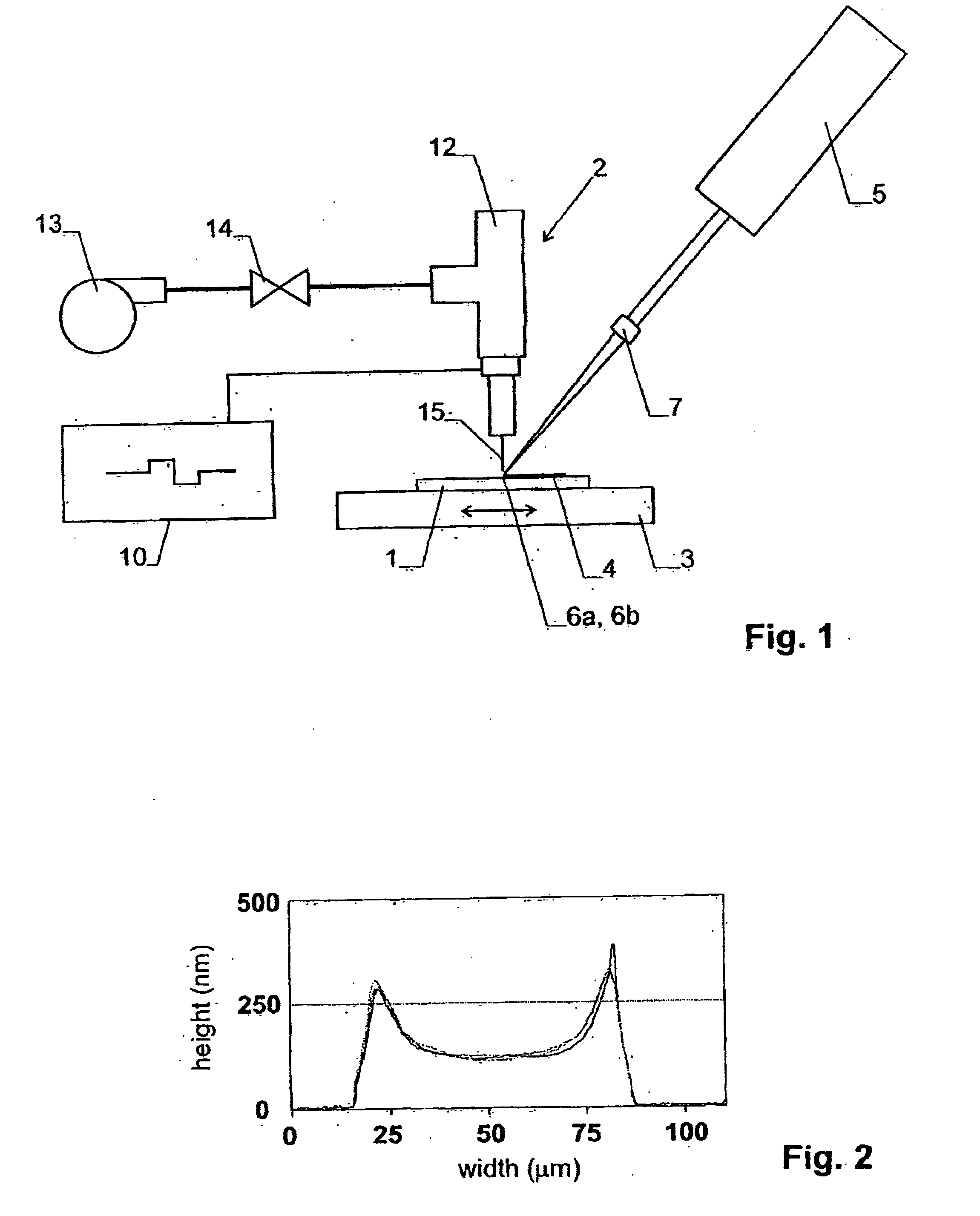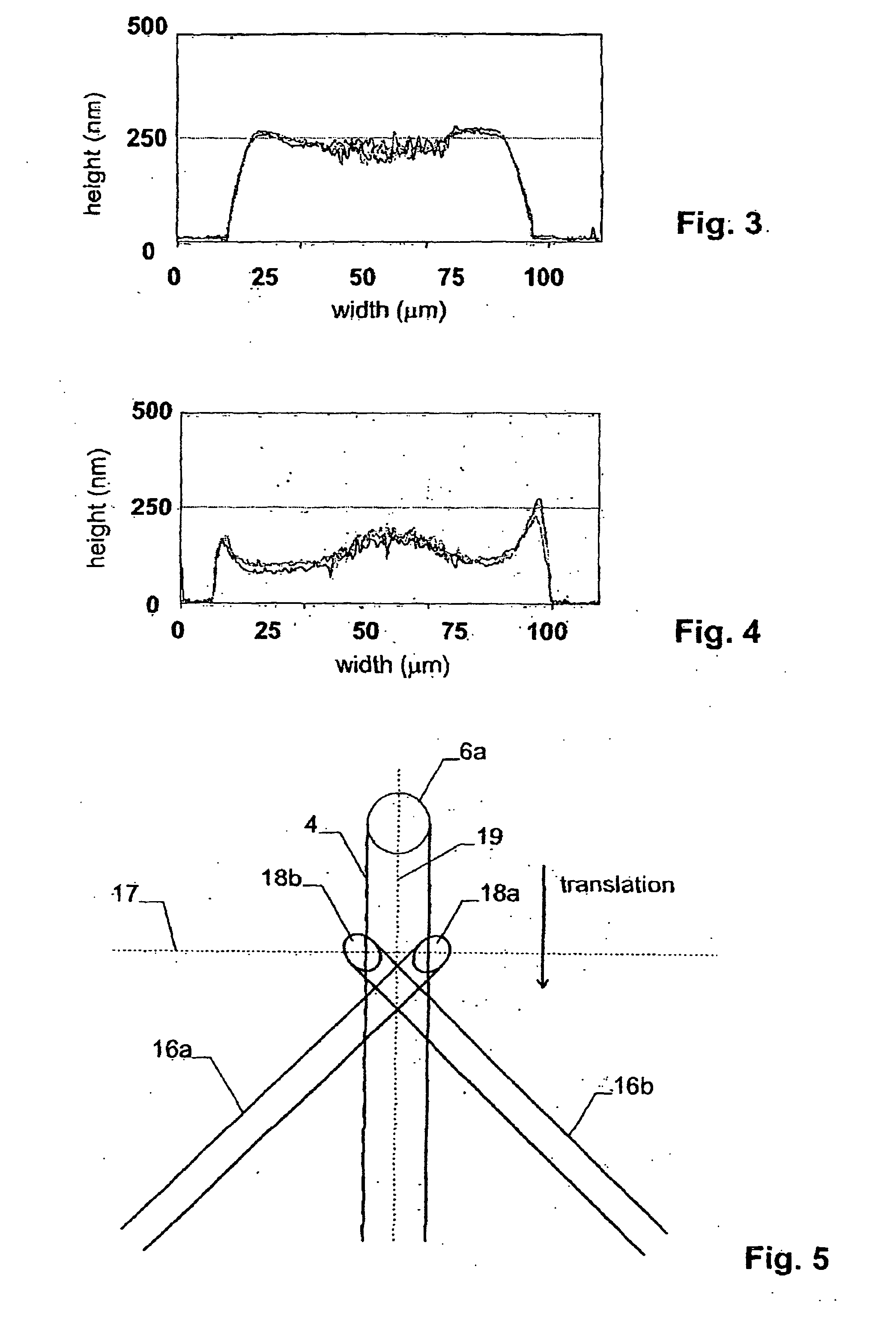Maskless nanofabrication of electronic components
a technology of electronic components and nanoparticles, which is applied in the direction of fixed capacitors, printed circuit non-printed electric components association, conductive material removal by irradiation, etc. it can solve the problems of reducing the temperature increase in the substrate, the precision of printing or droplet-based fabrication of structures is typically limited, etc., to achieve the effect of reducing the amount of suspension, avoiding damage to thermally sensitive regions in other areas of the substrate, and efficient low-loss methods
- Summary
- Abstract
- Description
- Claims
- Application Information
AI Technical Summary
Benefits of technology
Problems solved by technology
Method used
Image
Examples
example 1
[0098]In this example, gold nanoparticles with a mean average size of approximately 2 nm to 5 nm were suspended in toluene. The mass-fraction of gold in the solution was approximately 40% of the total weight. Droplets were generated with a drop-on-demand piezoelectric jetting device as described herein.
[0099]The drops, 3, were deposited to form a printed line strip, 4, on a silicon wafer substrate by moving the substrate continuously at a speed of about 1 mm / s (millimeter per second) with a positioning stage. Printed line strip, 4, was simultaneously cured by light from an argon ion laser at a wavelength of 488 nm, where the suspension had an absorption of less than 1 μm−1. The curing point, 6b, was located immediately behind the point, 6a, where the drops impinged on the substrate, 1. The curing point had a diameter of approximately 100 μm.
[0100]After cooling, the remaining structure consisted of solid, continuous, electrically conducting gold lines with good electrical conductance...
example 2
[0101]In this example, gold in toluene suspension with droplets of approximately 46 μm diameter were applied at a frequency of 30 Hz to a glass substrate moving at 2 mm / s. The width of the deposited (still liquid) line was measured to be about 125 μm.
[0102]After printing, a continuous cw-argon ion laser beam with wavelength 514 nm was applied for curing with a translation speed of 2 mm / s to the approximate center of the printed line at an angle of incidence of 45°. The laser beam had a power of 100 mW and the beam waist (1 / e2) was 27 μm.
[0103]Atomic Force Microscope (AFM) images were recorded for evaluating the cross section of the cured printed line. A thickness profile along three different lines perpendicular to the printed line are shown in FIG. 2. As observed, the cured line strip has a maximum thickness at its edges. The non-uniformity of the thickness is thought to be due to thermal diffusion of gold particles towards the edge of the beam, i.e., towards the evaporation interf...
example 3
[0104]The same parameters as for example 2 were used, with the following exceptions: The translation speed was 0.2 mm / s and the laser power was 300 mW. The thickness profile recorded by AFM is shown in FIG. 3.
PUM
 Login to View More
Login to View More Abstract
Description
Claims
Application Information
 Login to View More
Login to View More - R&D
- Intellectual Property
- Life Sciences
- Materials
- Tech Scout
- Unparalleled Data Quality
- Higher Quality Content
- 60% Fewer Hallucinations
Browse by: Latest US Patents, China's latest patents, Technical Efficacy Thesaurus, Application Domain, Technology Topic, Popular Technical Reports.
© 2025 PatSnap. All rights reserved.Legal|Privacy policy|Modern Slavery Act Transparency Statement|Sitemap|About US| Contact US: help@patsnap.com



